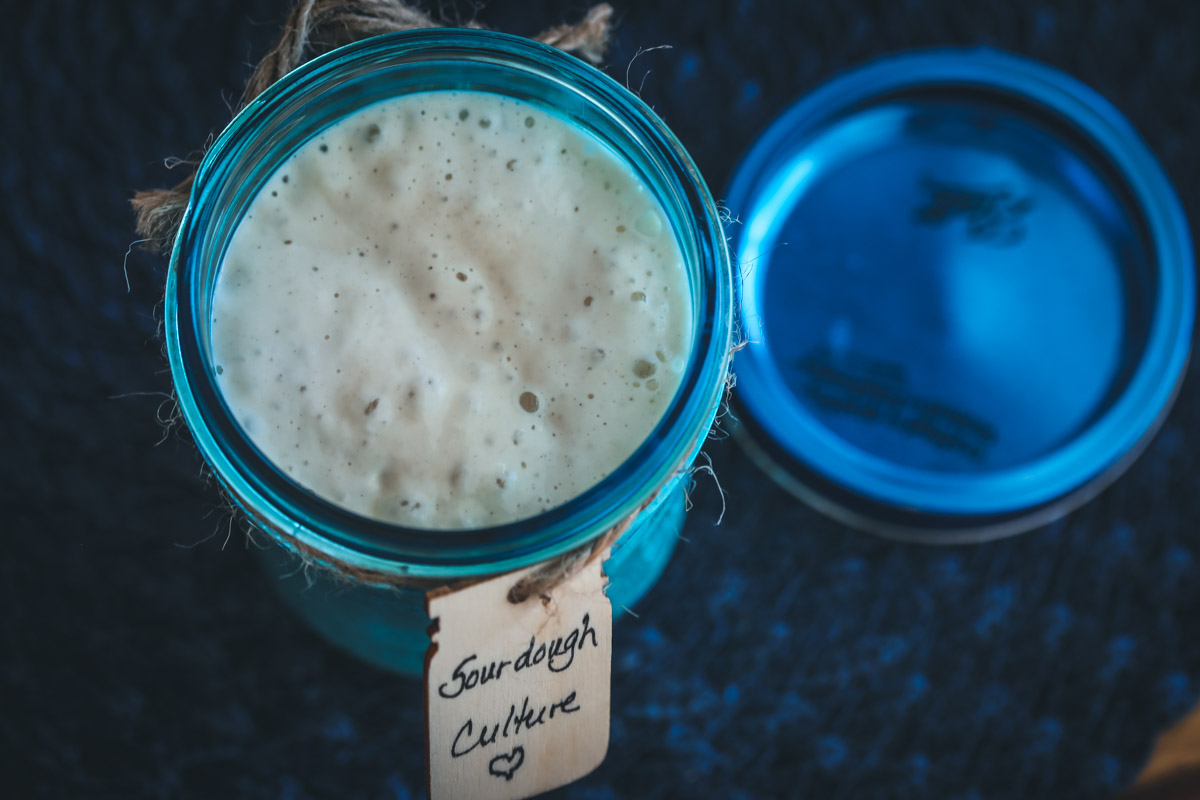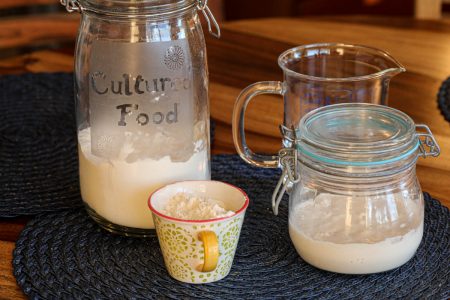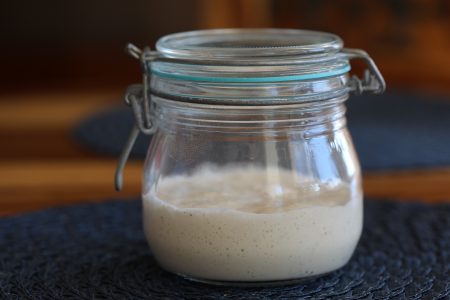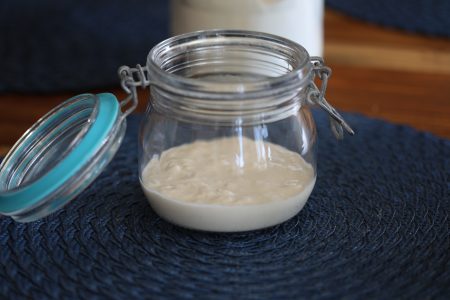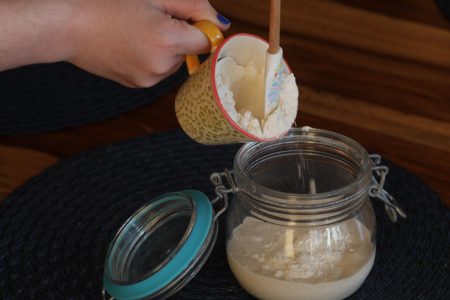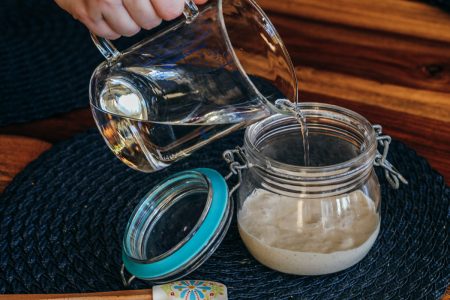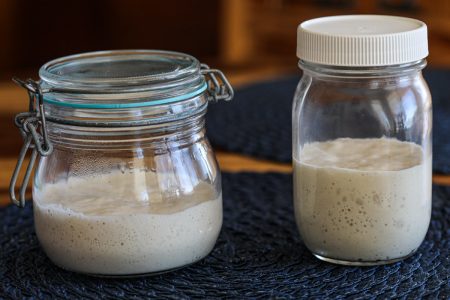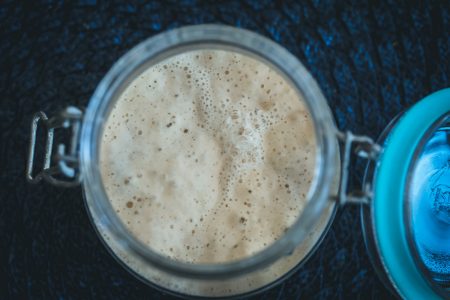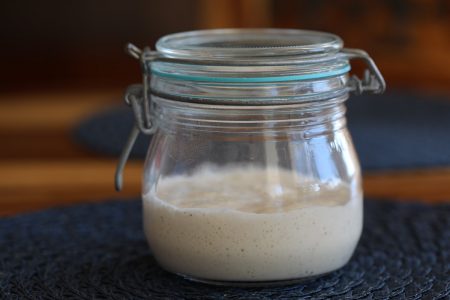How to Use Your Sourdough Starter
Ingredients
- 1 pint or quart canning jar – Use a clear jar so you can check to see how many bubbles are on the sides of your starter.
- ½ cup Sourdough Starter – If you have less than ½ cup this is ok. You just need a little starter to make more.
- ½ cup Premium Natural All-purpose Flour – (do not use sprouted flour) See note below*
- ½ cup Water spring or filtered with minerals
Every ingredient with a link was selected by me to make it easier for you. I may receive a small affiliate commission if you buy something through my links. Thank you! ❤️
Instructions
- Take your sourdough starter from the refrigerator. I usually feed my starter the night before I am going to use it. You don’t have to feed it at night, you can do it anytime, just give it at least 6-12 hours to ferment (until it looks bubbly, especially on the sides of the jar) before you use it to make your bread.
- The starter that is left in the jar needs to be fed equal portions of flour and water. Stir it together in the jar thoroughly and then place in the fridge until you need to feed it or make another loaf. Even if you only have a tablespoon of starter left or just some on the sides of the jar, you can make more starter from this. Give it equal portions of flour and water and it will make it into more starter. So say you only have a few spoonfuls of starter left, feed it ½ cup of flour and ½ cup water and let it ferment on the counter. (DON'T use more starter than the other ingredients!)
- Refrigerating – Once your sourdough starter is safely in the refrigerator, it will need a little attention, although once it's cold and relatively dormant, it can survive between "feedings." It is certainly not hard to care for, but it won't just sit for months on end like a packet of commercially dried yeast either. Feed it at least once a week on the counter or in the fridge. It just needs more flour and water in equal amounts of starter, flour, and water as this is its food and once it is out of food it will eventually die. (DON'T use more starter than the other ingredients!)
Notes


